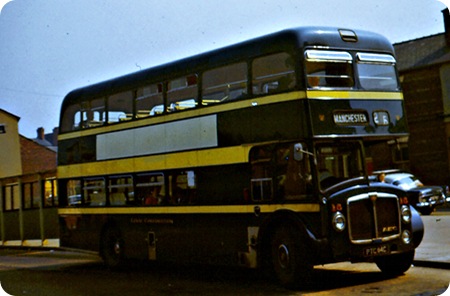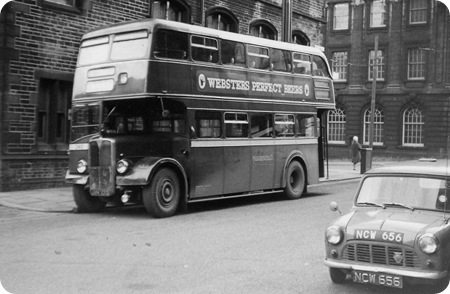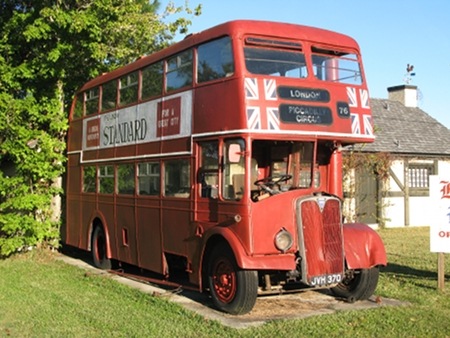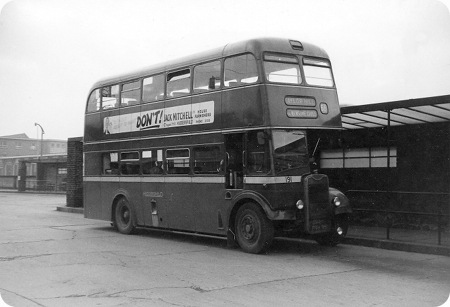
Leigh Corporation
1965
AEC Renown
East Lancs H41/31F
I think but I’m not over sure, but was the Renown to take over from the Bridgemaster does anybody know. This wasn’t the first time the Renown name had been used by AEC in the late 20s early 30s there was a six-wheeled chassis called the Renown. It would appear that the chassis was used for both double or single deck vehicles.
Picture here of a double decker (scroll down to first b/w picture).
Picture here of a single decker.
The Renown was a replacement for the Bridgemaster. The big problem with the former was that it was of integral construction, which at that time was unacceptable to just about every operator of any significance. In fact by the time the Renown emerged everybody was moving to Atlanteans and Fleetlines, so that was a flop as well!
Yet two more AEC dead-ends, to rank with the ‘Q’ the Regent IV and the Monocoach!
David A Jones
I remember that when AEC announced its intention to build the Renown, the shrinking market for front-engined buses was recognised, and it was intended that the new model should replace the full-height Regent V as well as the low-height Bridgemaster. Quite why that didn’t happen I don’t know for certain, but in view of the Renown’s reputation for being over-engineered, I would imagine that production costs made it impossible to sell it at a price competitive with other full-height models.
However, full-height Renowns were built in small numbers for Leicester, Nottingham and Wolverhampton corporations, the low floor being used to give greater headroom for passengers.
Peter Williamson
I’ve ridden a time or two on this preserved Leigh Renown vehicle and it is in very fine order indeed. I may be wrong, but I think I heard that it was involved in an unfortunate "shunt" recently on one of the Manchester Museum open days.
Quite apart from any mechanical or other difficulties I think that the lack of sales for the model can largely be summed up in three words – "One Person Operation" – it probably arrived on the market several years too late.
Chris Youhill
14/07/12 – 10:48
I have just found a brilliant facsimile of a Leigh Corporation Guy Arab model bus on EFE Models of Loughborough models, website based here in Derby.
From what I remember of the pre selnec days, I don’t think that the manufacturer has captured the original dark blue. Never the less its good to see that a model has at last seen the light of day.
Duncan N Smith
16/09/12 – 06:59
Looks like the model livery is correct. Leigh buses were light blue until a livery change in 1948. More details if you want them in the book ‘The Leyland Buses of Leigh Corporation’ Published by the Leyland Society and authored by Ron Phillips.
Frank Taylor
12/03/14 – 07:36
Oh how I remember with delight, the diversity of the Leigh Corporation fleet. I moved from London to the village of Glazebury, just outside of Leigh in the mid 1960,s and travelled daily into Leigh to work. My favourite bus was the A.E.C. Renown with it’s powerful sounding engine. My favourite journey, on the Renown, was the no.26 from Leigh to Manchester, especially if I managed to acquire an upstairs seat at the front. Another memory from those days is the TIM ticket machine, of which, I have several in my collection, including a 1930’s Leigh Corporation machine. Now resident near Plymouth, I am a member of Plymouth City Transport Preservation Group.
Eric Mansfield




